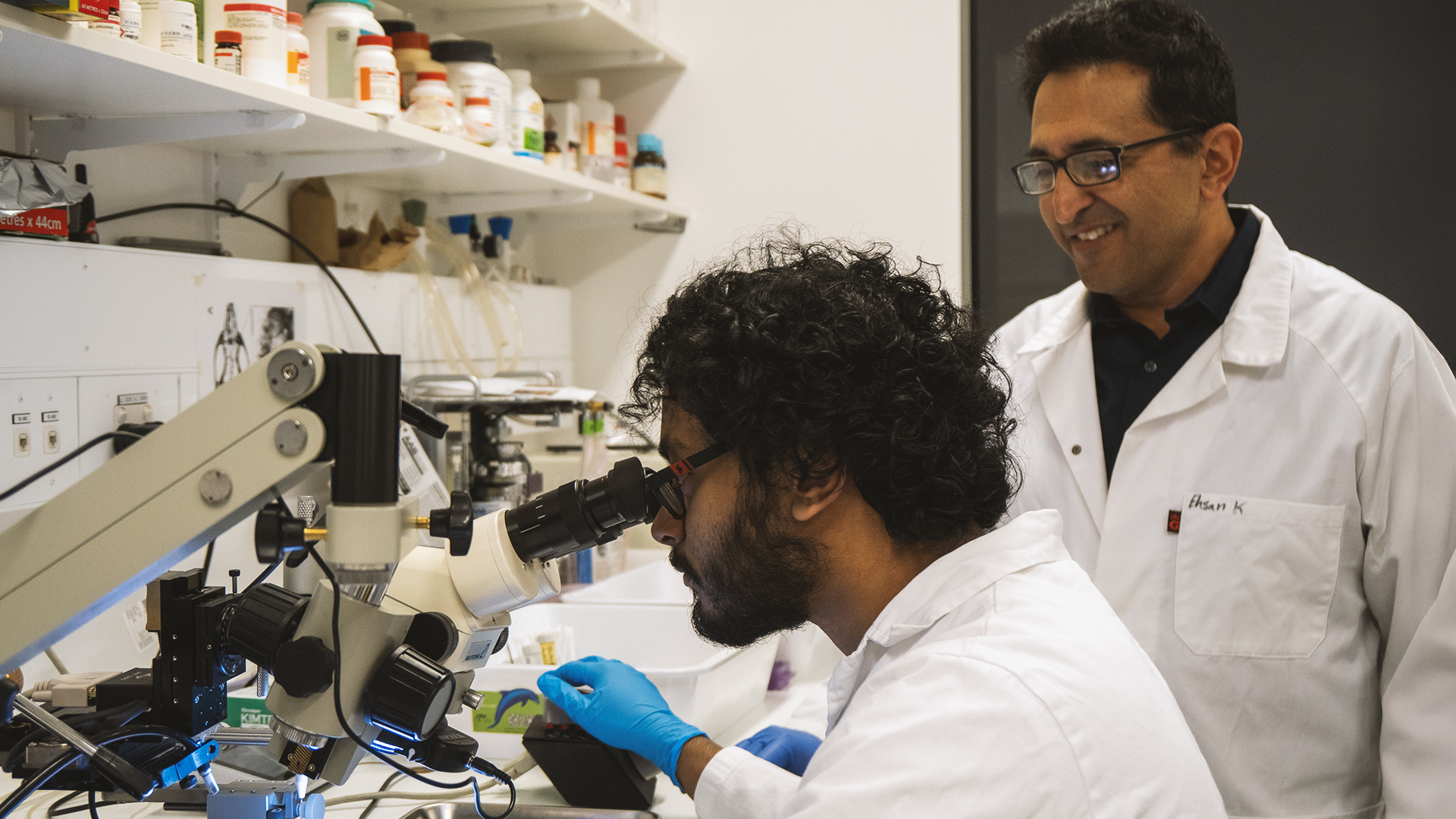New EEG system set up for real-time brain activity and seizure monitoring in mice
The Calcium Signalling Lab at the Eccles Institute of Neuroscience, John Curtin School of Medical Research (JCSMR), Australian National University (ANU), has established the School’s first in-vivo, four-channel Electroencephalography (EEG) monitoring system for real-time seizure and brain activity tracking in mice.
This cutting-edge development is a significant boost to the University’s neuroscience capabilities. It enables researchers to precisely monitor neural activity across different brain regions and phenotypes, opening new opportunities for working with research collaborators.
“This new EEG system is a valuable addition to our neuroscience research,” says Dr Ehsan Kheradpezhouh, Group Leader of the Calcium Signalling Lab, “It allows us to investigate brain disorders including epilepsy, Alzheimer’s disease, and migraine in mouse models. We can now synchronise brain activity with behaviour, which is crucial for understanding the dynamics of these disorders and exploring novel therapeutic approaches.”
The lab has implemented Pinnacle’s EEG/EMG system, a globally recognised platform known for its accuracy and reliability. The setup enables real-time, high-resolution neural recordings, paving the way for breakthroughs in seizure dynamics, neuroinflammation, neurodegenerative disease, and drug development.

Versatile system for neuroscience research
“Understanding cholesterol metabolism in the brain, for example, offers a novel pathway for treating epilepsy,” says Muhammad Bilal, a PhD student from the lab.
“Through our molecular biology work—done in collaboration with the Hayashi Group in the Division of Genome Sciences and Cancer—we aim to study novel therapeutic targets that could significantly improve the lives of those affected by epilepsy.”
With two fully operational EEG setups, adds Postdoctoral researcher Dr Karthik Subramanian Krishnan, the system allows researchers to conduct simultaneous monitoring of multiple animals, significantly enhancing our data throughput efficiency.
“We plan to integrate three additional setups in the coming years to further strengthen our capacity for large-scale studies,” says Dr Krishnan.
For Honours student Moska Jadeer, the system has already made a difference.
“Trying to bridge the knowledge gap between an unconventional signalling channel and epilepsy has been the focus of my Honours project,” she says.
“Thanks to our new equipment, it feels like that goal is much closer than we thought.”
Master’s student Sreyes Sridharan is using the new system for his Alzheimer’s research.
“This setup is a great addition to my project—it lets us track brain activity in real time and helps me understand how calcium regulation works in neurons and glial cells,” he says.

With this system, the lab aims to investigate a broad spectrum of neurological conditions, including epilepsy, Alzheimer’s disease, migraine, stroke, and multiple sclerosis. The ability to record and analyse brain activity in real time offers a unique opportunity to understand disease mechanisms, test new therapeutics, and refine current treatments.
A platform for collaboration and innovation
Beyond its immediate research use, the EEG system serves as a valuable resource for collaborations within and beyond ANU. The lab welcomes partnerships with researchers interested in utilising this technology to explore various neurological conditions, drug effects, and genetic models. The system’s capacity to generate objective, robust, reproducible data will be instrumental in accelerating discoveries and advancing interdisciplinary research efforts.
“We’re excited to collaborate with other researchers and institutions,” says Dr Kheradpezhouh. “Our EEG system is designed to provide high-quality data that can drive significant advancements in neuroscience research.”
The EEG monitoring setup follows a standardised protocol, ensuring precision and reliability at every stage:
- Electrode implantation surgery – Electrodes are placed using a standardised surgical technique targeting specific brain regions to ensure high-quality signal quality.
- Baseline and drug-induced EEG recording – The system captures both baseline and drug-altered neural activity via real-time telemetry.
- Spike and seizure analysis – Advanced software tools, including Sirenia Seizure Pro, are used to analyse seizure events, spike frequencies, and drug responses.
By adhering to these protocols, the Calcium Signalling Lab ensures the highest standards of data integrity and experimental reproducibility.

Looking ahead
As the lab continues to enhance its EEG monitoring capabilities, it will refine methodologies and expand its collaborative network.
By establishing this state-of-the-art system, the Calcium Signalling Lab at JCSMR reaffirms its dedication to advancing neuroscience research at the Eccles Institute of Neuroscience—and contributing to the global effort to better understand and treat neurological disorders.
Researchers interested in collaboration are encouraged to reach out and explore how this EEG monitoring system could support their work.
